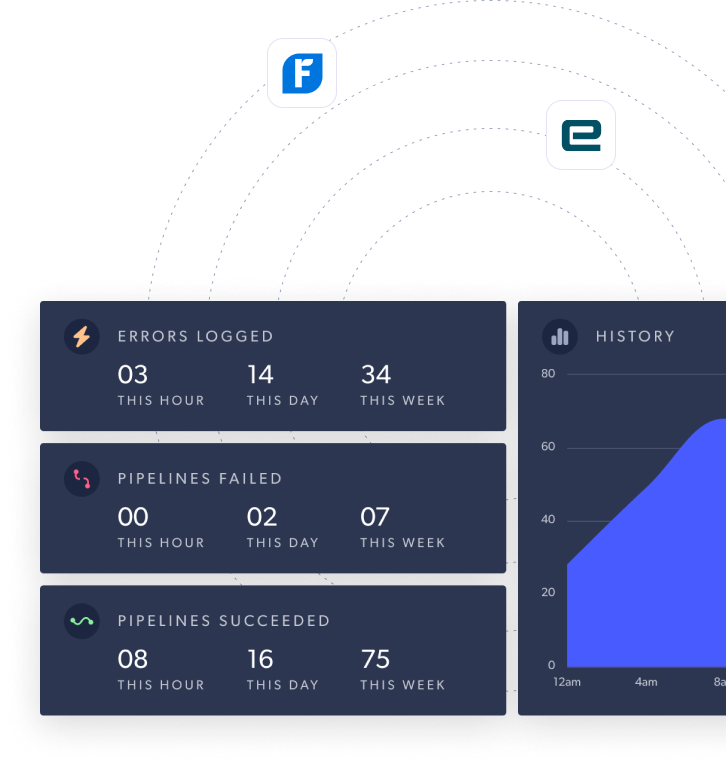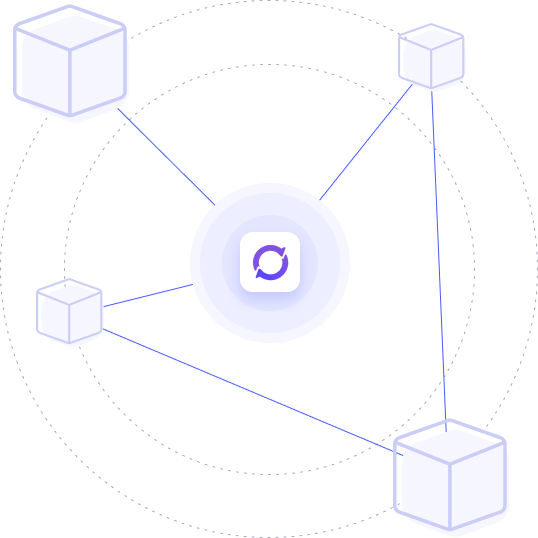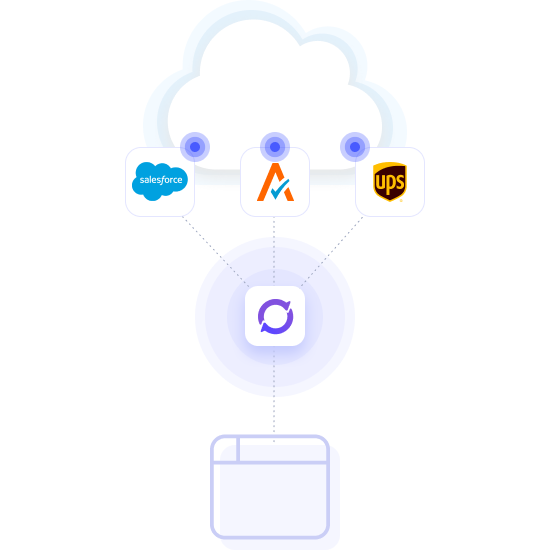

Shopify eCommerce Integration
Clarity Connect™ integrates Shopify with Syspro, automating business processes and data sharing. This robust integration connects your critical business systems to automate order processing, inventory management, and customer data synchronization.
The Disconnect: Why Manual Syspro & Shopify Management Fails
Businesses running Syspro ERP and Shopify eCommerce often struggle with a fundamental disconnect. Manual data entry, disparate systems, and delayed information flow lead to costly errors, frustrated customers, and hindered growth. This operational friction prevents businesses from realizing their full potential in the fast-paced digital economy.
-
Manual order entry from Shopify into Syspro is time-consuming and error-prone.
-
Inaccurate inventory levels lead to overselling on Shopify and stockouts in Syspro.
-
Delayed fulfillment due to manual processing of sales orders and shipments.
-
Lack of a unified customer view across sales (Shopify) and finance/operations (Syspro).
-
Complex and error-prone financial reconciliation between eCommerce transactions and Syspro's General Ledger.
-
Inconsistent product data (pricing, descriptions, availability) across platforms.


The Integrated Advantage: Seamless Syspro & Shopify Operations
Our iPaaS-driven integration solution bridges the gap between Syspro ERP and Shopify eCommerce, creating a unified, intelligent ecosystem. By automating critical workflows and ensuring real-time data synchronization, we empower your business to operate with unprecedented efficiency, accuracy, and agility. Say goodbye to manual headaches and hello to streamlined digital commerce.
-
Real-time, event-driven data synchronization.
-
Comprehensive mapping for all key entities (Orders, Products, Customers, Inventory).
-
Bi-directional data flow for a single source of truth.
-
Robust error handling and monitoring for continuous operations.
-
Scalable architecture designed for high transaction volumes.
Comprehensive Solution Details
-
Real-time, event-driven data synchronization.
-
Comprehensive mapping for all key entities (Orders, Products, Customers, Inventory).
-
Bi-directional data flow for a single source of truth.
-
Robust error handling and monitoring for continuous operations.
-
Scalable architecture designed for high transaction volumes.
-
Low-code/no-code interface for business user agility.
Syspro & Shopify Integration: Technical Overview
Our integration solution leverages a robust iPaaS to orchestrate seamless data flow between Syspro ERP and Shopify eCommerce. This architecture prioritizes real-time, event-driven communication using native APIs and webhooks, augmented by intelligent data transformation and comprehensive error handling.
Data Flow Steps
**Connectors & Authentication:** Securely connect to Syspro via its API services (token-based or OAuth 2.0) and Shopify via OAuth 2.0, utilizing dedicated iPaaS connectors.
**Event Triggers:** Shopify webhooks (e.g., `orders/create`, `products/update`, `customers/create`, `fulfillments/create`, `refunds/create`) initiate real-time data flows. For Syspro-initiated updates, events can be triggered via Syspro's native eventing or scheduled polling by the iPaaS.
**Data Ingestion:** The iPaaS captures the raw JSON payloads from Shopify webhooks or retrieves data from Syspro API calls.
**Data Mapping & Transformation:** A visual mapping canvas within the iPaaS allows for drag-and-drop field mapping, complex data transformations (e.g., currency conversion, address formatting, concatenation), and enrichment using lookup tables or external data.
**Business Logic & Validation:** Low-code rules engines apply business-specific logic (e.g., pricing tiers, customer credit checks, inventory allocation rules) and validate data against Syspro's business rules and data types.
**API Invocation:** Transformed and validated data is then sent to the target system's API endpoints (e.g., Syspro's `/APIServices/SalesOrderService/AddSalesOrder` or Shopify's `/admin/api/{version}/inventory_levels.json`).
**Error Handling & Monitoring:** Robust mechanisms handle transient and persistent errors, with automatic retries, dead-letter queues, and real-time alerts to ensure data integrity and operational continuity.
**Status Updates:** Confirmation or error messages are logged, and relevant status updates can be pushed back to the source system (e.g., Syspro order ID to Shopify Order notes).
Data Touchpoints
"The integration architecture features an iPaaS as the central hub. Shopify (via Webhooks for Orders, Customers, Fulfillments, Refunds) pushes data to the iPaaS. The iPaaS transforms and validates this data, then uses Syspro's API Services (e.g., Sales Order, Customer, Inventory, AR Invoice) to create/update records. For inventory synchronization, Syspro updates trigger the iPaaS to update Shopify's Inventory Levels via its Admin API. This bi-directional flow ensures real-time consistency."
Simple, transparent pricing for Shopify + Syspro.
Start with a single integration pair and scale as your business grows—without surprise fees or transaction penalties.
How Middleware Integration Works
See Shopify + Syspro integration in action.
Explore a guided demo, start a sandbox integration, or speak directly with our solution architects about your specific use cases.
Integration Use Cases
Explore how the integration behaves in real business scenarios, with clearly defined steps, outcomes, and execution patterns.
E-commerce Order-to-Cash Automation
Streamline the entire sales process from Shopify checkout to Syspro accounting. New Shopify orders automatically create sales orders in Syspro, allocate inventory, and trigger fulfillment and invoicing. Payment status is synchronized, ensuring a complete financial record.
Integration Steps:
- 0 Shopify Order Created (Webhook)
- 1 iPaaS maps Order to Syspro Sales Order
- 2 Syspro Sales Order Created (API: /APIServices/SalesOrderService/AddSalesOrder)
- 3 Inventory Allocation in Syspro
- 4 Fulfillment Triggered (WMS/3PL or Syspro)
- 5 Shopify Fulfillment Update (Webhook) triggers Syspro Shipment/Invoice (API: Syspro AR Invoice)
- 6 Payment Reconciliation in Syspro (API: Syspro Payment)
Business Outcome
Real-time order processing, reduced manual errors, faster cash conversion, improved customer satisfaction with timely updates.
Real-time (event-driven)
API Endpoints & Data Logic
Technical details for developers and architects.
⚡ Transformation Logic
- **Data Type Conversion:** Convert strings to numbers, dates to specific formats (e.g., 'YYYY-MM-DD').
- **Field Concatenation/Splitting:** Combine Shopify first and last names for Syspro CustomerName. Split address lines if needed.
- **Lookup Tables:** Map Shopify payment gateways or shipping methods to Syspro-specific codes.
- **Conditional Logic:** Apply different tax treatments or customer groups based on Shopify data.
- **Default Value Assignment:** Set default Syspro values for fields not present in Shopify (e.g., default warehouse, payment terms).
- **Currency Conversion:** If operating in multiple currencies, apply real-time conversion rates.
🛡️ Error Handling
- Syspro API unavailable or returning 5xx errors.
- Invalid StockCode in Shopify order line item.
- Shopify customer email already exists in Syspro with different details.
- Syspro's credit limit check fails for a new Shopify customer.
- Network latency causing timeouts during API calls.
- Malformed data payload from Shopify webhook.
Simple, transparent pricing for Shopify + Syspro.
Start with a single integration pair and scale as your business grows—without surprise fees or transaction penalties.
Simple, transparent pricing for Shopify + Syspro.
Start with a single integration pair and scale as your business grows—without surprise fees or transaction penalties.
See Shopify + Syspro integration in action.
Explore a guided demo, start a sandbox integration, or speak directly with our solution architects about your specific use cases.

